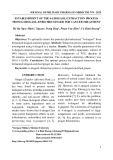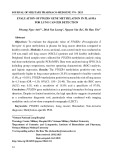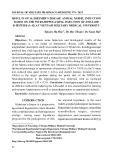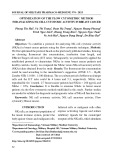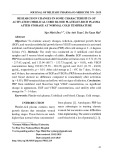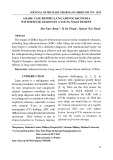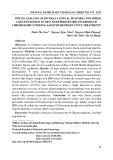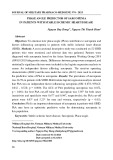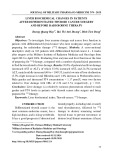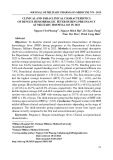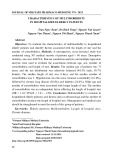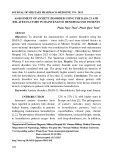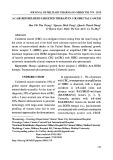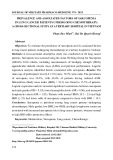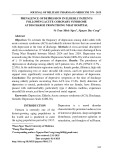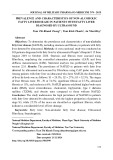
JOURNAL OF MILITARY PHARMACO-MEDICINE N04 - 2025
163
PREVALENCE OF DEPRESSION IN ELDERLY PATIENTS
FOLLOWING ACUTE CORONARY SYNDROME
AT DISCHARGE FROM THONG NHAT HOSPITAL
Vo Tran Minh Ngoc1, Nguyen Duc Cong2*
Abstract
Objectives: To estimate the frequency of depression among older adults with
acute coronary syndrome (ACS) and identify relevant factors that are associated
with depression at the time of discharge. Methods: A cross-sectional descriptive
study was conducted on 117 elderly patients with ACS who were discharged from
Thong Nhat Hospital between March 2024 and June 2024. Depression was
assessed using the 30-item Geriatric Depression Scale (GDS-30), with a total score
of ≥ 10 indicating the presence of depression. Results: The prevalence of
depression at discharge among elderly ACS patients was 15.4% (95%CI: 8.7% -
22.0%). In the multivariate regression analysis, female gender, illiteracy, high-risk
CCI, experiencing two or more stressful life events, and low perceived social
support were significantly associated with a higher prevalence of depression.
Conclusion: The prevalence of depressive symptoms at the time of discharge
among elderly patients recovering from ACS was 15.4%. Early detection of
depression is crucial, particularly in patients who are female, have illiteracy,
present with multimorbidity, particularly type 2 diabetes mellitus, experience
stressful life events, and have low perceived social support.
Keywords: Depression; Elderly; Acute coronary syndrome (ACS); Discharge;
Geriatric Depression Scale (GDS-30).
INTRODUCTION
Vietnam is currently one of the
fastest-growing aging populations in
the world and is predicted to enter
the aging population period by 2035.
Depression is a mood disorder
characterized by persistent sadness, loss
of interest or pleasure, sleep and appetite
disturbance, psychomotor agitation or
retardation, and thoughts of self-harm.
1Pham Ngoc Thach University of Medicine
2Thong Nhat Hospital
*Corresponding author: Nguyen Duc Cong (cong1608@gmail.com)
Date received: 23/3/2025
Date accepted: 02/4/2025
http://doi.org/10.56535/jmpm.v50i4.1271





